How Paraphrasing Tools use NLP Libraries in Python to Generate Text?
Paraphrasing is a common technique to express the meaning of an existing idea or text in a more translucent way to make it more understandable. There are variety of different ways of doing paraphrasing that a person needs to learn to get the best results out of it.
However, on the other hand, this technique consumes a lot of time too and to counter this issue, technology came in to help.
There are certain automatic tools available that can do the paraphrasing job for you in a much more efficient way. But do you know how they work? And how you can paraphrase any text using NLP libraries in Python?
In this blog post, we will delve into the world of natural language processing (NLP) and explore how to paraphrase content using NLP libraries in Python. We will cover the basics of NLP and how it works, as well as the various libraries and frameworks that are available for paraphrasing text in Python.
Throughout the post, we will provide detailed examples and code snippets to help you get started with paraphrasing text using NLP libraries in Python. Whether you are a beginner or an experienced programmer, this post will provide you with the knowledge and skills you need to paraphrase content using NLP libraries in Python effectively.
Before jumping into the details, let's first discuss the Python programming language.
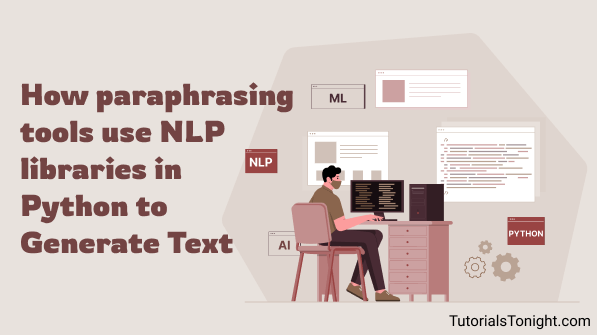
What is Python language: An Overview
Python is a high-level, general-purpose programming language that was first released in 1991. It is known for its simplicity and lightweight, making it an ideal choice for programmers.
One of the critical features of Python is its extensive standard library, which includes a wide range of modules and functions for tasks such as data manipulation, file I/O, and networking. This makes it easy for developers to build robust and efficient applications without additional libraries or frameworks.
Python is also highly versatile and can be used for various projects, from simple scripts to large-scale applications like paraphrasing. It is supported by a wide range of platforms and operating systems and can be used in conjunction with other languages and technologies, such as C/C++ and Java.
Python is a popular and versatile programming language that is well-suited for various tasks and projects, including natural language processing (NLP) and text paraphrasing.
What is Natural Language Processing (NLP)
Natural Language Processing (NLP) is a subfield of artificial intelligence that is concerned with enabling computers to process, analyze, and generate human language. It is a complex field that encompasses a diverse range of techniques and technologies, including machine learning, linguistics, and computer science.
One of the primary goals of NLP is to enable computers to process and analyze large volumes of unstructured text data in a way that is meaningful and useful to humans. This includes tasks such as text classification, sentiment analysis, language translation, and information extraction.
Paraphrasing is a specific type of NLP task that involves generating a new version of text that conveys the same information in a different way. This can be done using a variety of techniques and technologies, including transformer models and machine learning algorithms which we will discuss in the next section.
Now, after the basics, let's step by step discuss how to paraphrase using NLP libraries in python.
How To Paraphrase text in Python using Pre-trained NLP Models?
To paraphrase text using transformers in Python, we can utilize the BERT transformer model and its associated tokenizer. BERT, or Bidirectional Encoder Representations from Transformers, is a powerful transformer model that has achieved top-notch results on a wide range of natural language processing tasks.
Here's an example of how to use BERT to paraphrase text in Python that is used by many online paraphrasing tools:
First, we need to install the necessary libraries by running the following command in the terminal:
pip install transformersNext, we can import the BERT model and tokenizer in our Python script:
from transformers import BertTokenizer, BertModelNow, let's say we want to paraphrase the following sentence: "The quick brown fox jumps over the lazy dog." Here's how we can do it using the BERT model:
# Load the pre-trained model
model = BertModel.from_pretrained('bert-base-uncased')
# Load the tokenizer
tokenizer = BertTokenizer.from_pretrained('bert-base-uncased')
# Tokenize the input text
input_text = "The quick brown fox jumps over the lazy dog."
input_ids = tokenizer.encode(input_text, return_tensors="pt")
# Generate the paraphrased text
outputs = model.generate(input_ids)
# Decode the output text
output_text = tokenizer.decode(outputs[0], skip_special_tokens=True)
# Print the paraphrased text
print(output_text)This will generate a new version of the input text that conveys the same information in a different way. For example, the output text could be something like "The rapid brown fox leaped over the sluggish dog."
As you can see, using transformers in Python to paraphrase text is a straightforward and efficient process. With just a few lines of code, we were able to generate a high-quality paraphrase of the input text using the powerful BERT model.
Additionally, because BERT is a bidirectional model, it can understand the context and meaning of the input text more nuancedly, resulting in more accurate paraphrases. You can also use other transformers with the same procedure to paraphrase text, like GPT2, GPT3, Pytorch, etc.
Now let's discuss a real-life example of a tool that uses NLP models in python to generate text that you can use to paraphrase any text quickly without needing to run codes.
Paraphrasing Tool: Paraphrase Text Online
Paraphrasing is a complex task that requires a deep understanding of the English language and the ability to generate text that conveys the same information in a different way. This is why it is often difficult to paraphrase text manually, especially if you are not a native English speaker.
However, there are many online paraphrasing tools that can help you paraphrase text quickly and easily. These tools use advanced NLP models and technologies to generate high-quality paraphrases of your text.
1. Paraphrasingtool.ai
When looking for an online paraphrasing tool, you will always find Paraphrasingtool.ai in the list of top reputable tools, and there are several reasons for this. The tool's popularity is mainly because it generates excellent results at a rapid pace.
The tool mainly relies on AI, NLP, and ML techniques to ensure near-human text that is readable, unique, and compatible for use anywhere the user want. The tool is programmed using Python language with NLP libraries like the one we discussed above, ensuring accurate results.
As paraphrasing is done using different techniques, the tool is equipped with several techniques that can alter existing content in many different ways to make it more understandable, remove plagiarism from it, and so on. It offers eight different modes crafted to meet several user needs.
You can use this tool for your regular paraphrasing needs like generating text for emails, blogs, articles, and so on. Also, for complex needs like removing plagiarism from the text, you can use premium modes that are faster and more efficient. Overall, the tool is an excellent resource for writers and other people dealing with text daily.
Here is an example of how this tool paraphrases text:
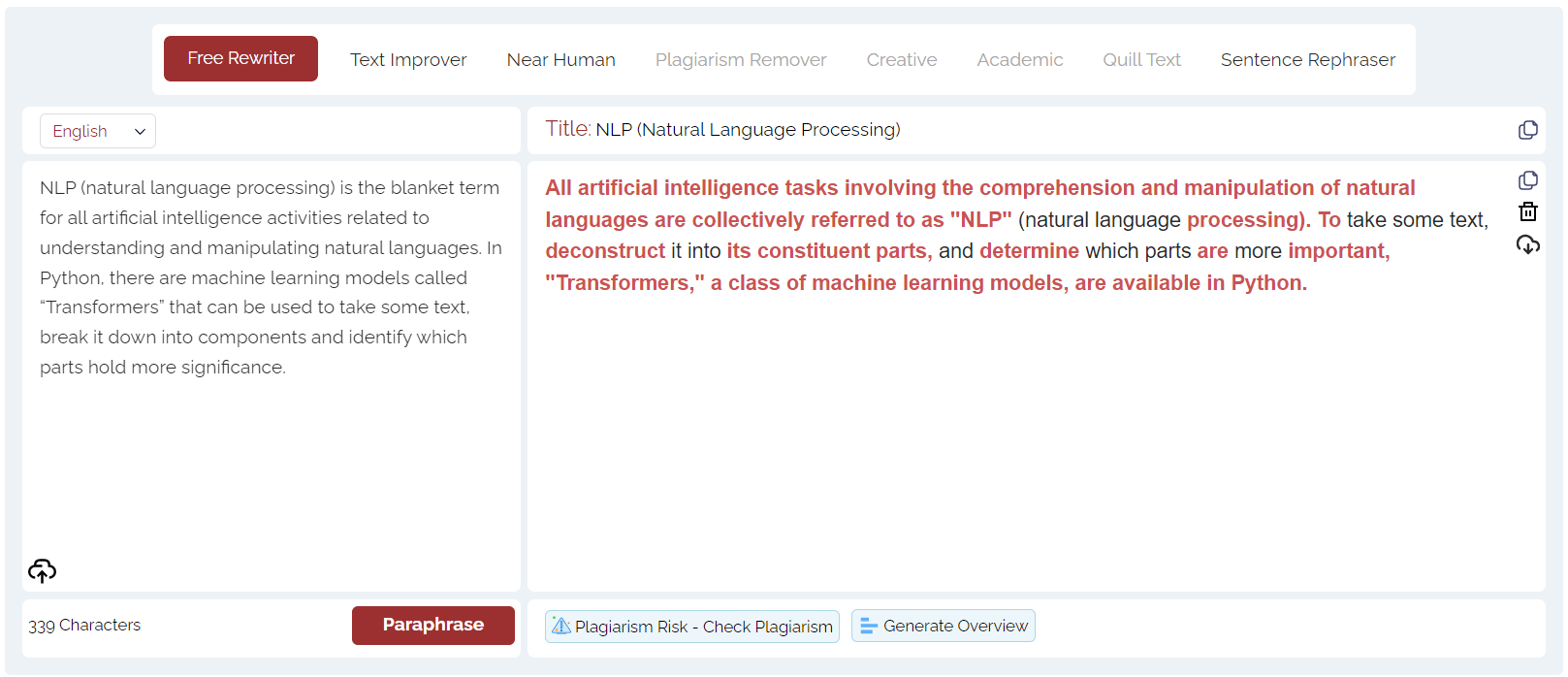
2. Plagiarism-changer.com
Plagiarism is a great concern and you may have heard about the consequences it brings along to your reputation and the work you have done. Paraphrasing is commonly used to eliminate plagiarism.
So, to counter issues of self and unintentional plagiarism, this tool was developed to help students, bloggers, writers or anyone that may face the problem of plagiarism. This tool is used as an example because it used certain libraries in python to make certain changes in the text which ensures no plagiarism is left.
This tool is a great option to avoid the need of doing all the technical stuff and to help you eliminate plagiarism.
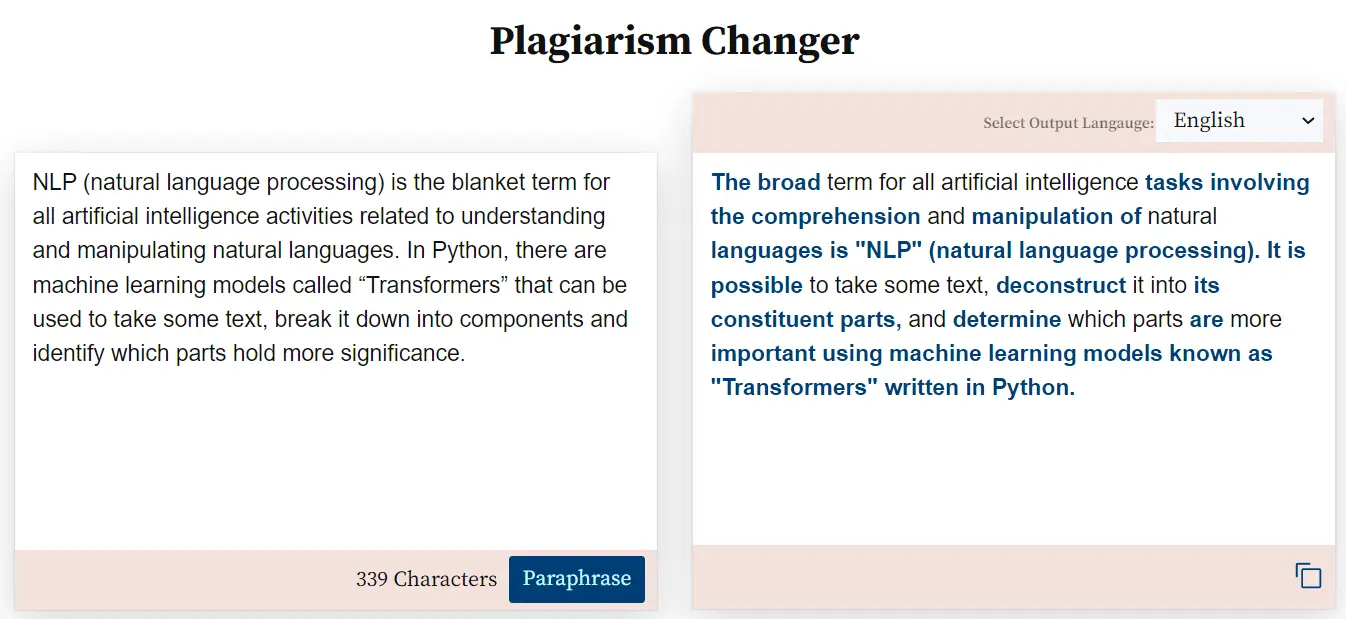
3. Rephrase.info
As we have previously mentioned, plagiarism is seriously bad for writers. With Rephrase.info's paraphrasing tool, you can easily and effortlessly reduce the chances of plagiarism from your work. This can help bloggers, students, teachers, and even professional journalists from submitting work with accidental or coincidental plagiarism in it.
Rephrase has five paraphrasing modes to work with and all of these modes operate by using Python libraries and algorithms. Different algorithms provide different results and that's how all the modes differ from each other.
The best feature of this tool is that is freemium. So, you can use some of its features for free and without registration. In this way, the bar for entry is very low. The fact that it also supports 20-plus languages makes it very accessible to a large audience. It is also very easy to use due to its minimalistic UI.
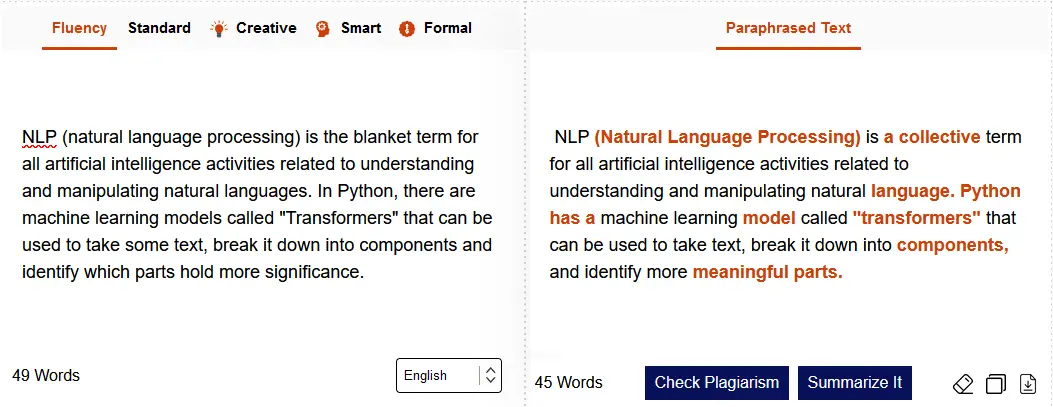
4. Paraphrasetool.ai
ParaphraseTool.ai is an online tool that offers free paraphrasing with around 6+ AI modes.
It utilizes advanced natural language processing algorithms to paraphrase sentences, paragraphs, or entire documents while retaining the originality of content.
The tool is designed to assist individuals who need to paraphrase text for various purposes, such as self-learning, academic writing, content creation, or avoiding plagiarism.
Users can input their text into the tool's interface and receive a paraphrased version quickly with just a single click.
ParaphraseTool.ai aims to enhance writing productivity and promote creativity by providing a convenient and reliable paraphrasing solution.
You can select from different paraphrasing modes such as formal, creative, anti-plagiarism, SEO, fluency, and academic.
The tool has grammar-checking and summarizing features to help you check content for potential grammatical errors and convert large text into brief ones.
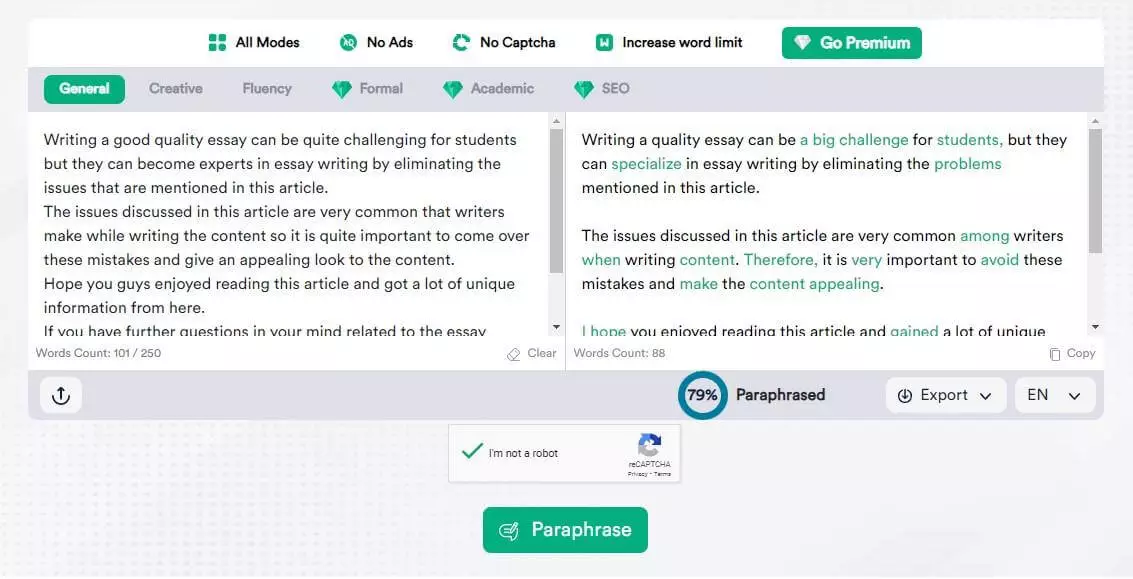
Final Words
Python is a great programming language that can be used to solve everyday problems if used in the right ways. Paraphrasing, if done manually, can be a daunting task that you can easily do by following a simple step-by-step process.
However, if you do not want to get into the technical side, you can use AI paraphrasing tools to help you do all these processes automatically.
